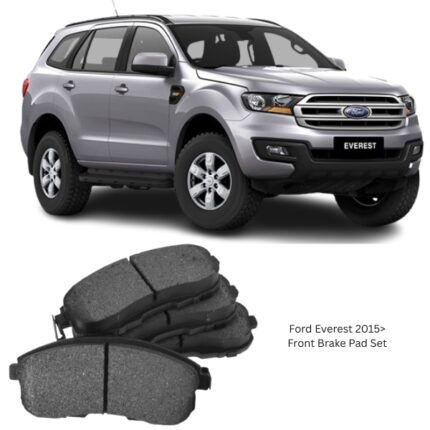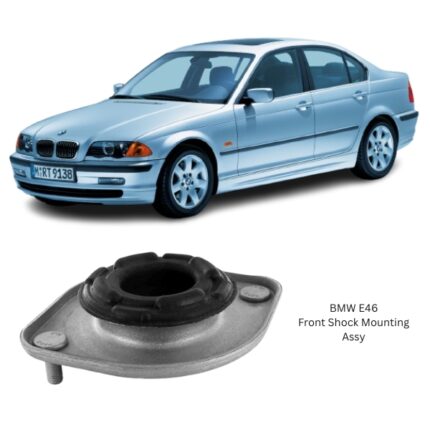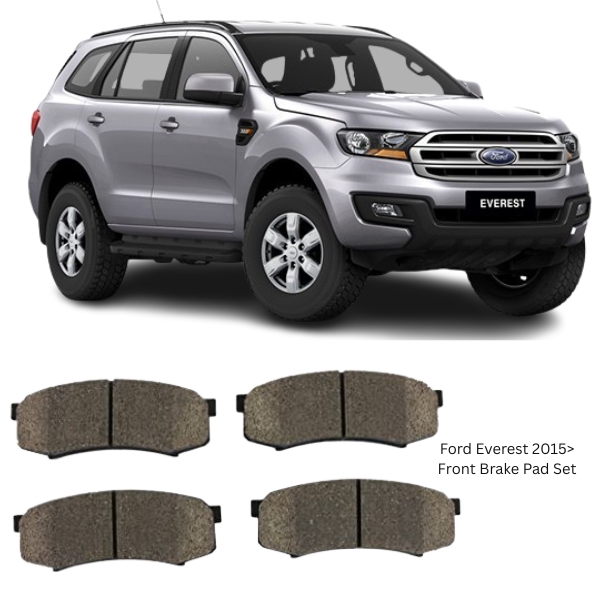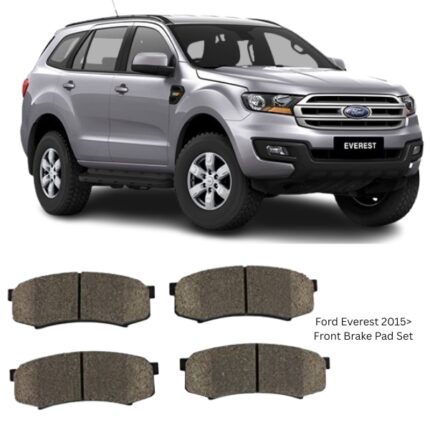Get Ford Everest Front Brake Pad Set D20179 in Kenya
The front brake pad set is a crucial component in the disc braking system of any vehicle, playing a central role in ensuring effective stopping power, safety, and overall driving control. Positioned within the front caliper assemblies, these pads work in conjunction with the brake discs (rotors) to provide the necessary friction that slows or halts the motion of the vehicle when the brake pedal is pressed.
Core Function and Importance
When the brake pedal is engaged, the hydraulic braking system transmits pressure to the front calipers. These calipers then press the brake pads against the spinning rotors attached to the wheels. This contact generates friction, converting kinetic energy into heat and bringing the vehicle to a controlled stop.
The front brake pads are more heavily utilized than the rear pads because the front brakes bear most of the braking load due to the natural forward weight transfer of the vehicle during deceleration. As such, the front brake pad set is designed to withstand higher temperatures and frictional forces while maintaining consistent performance.
Material Composition and Design
Front brake pads are manufactured using high-friction materials bonded to steel backing plates. These friction materials vary, depending on the application and desired characteristics:
-
Ceramic compounds: Known for producing less dust and noise, while offering stable performance and long life.
-
Semi-metallic blends: Include metals like steel, iron, or copper for enhanced strength and heat dissipation.
-
Organic (non-asbestos organic or NAO): Typically made from fibers and fillers bonded with resin, offering a softer and quieter operation.
Key components of a front brake pad include:
-
Friction Material: The high-friction surface that contacts the rotor, engineered for high heat tolerance and controlled wear.
-
Steel Backing Plate: Rigid and heat-resistant, it anchors the friction material and transmits pressure from the caliper.
-
Shims and Insulation: Multi-layered components affixed to the backing plate that help reduce noise, vibration, and heat transfer.
-
Chamfers and Slots: Design features to reduce noise and improve pad bite while helping to expel dust and gases during braking.
Some front brake pad sets include wear indicators—either mechanical tabs that emit noise when the pad is low, or electronic sensors that trigger dashboard alerts.
Performance Attributes
-
Reliable Friction Response: Engineered to provide predictable, smooth braking across a wide range of speeds and temperatures.
-
Thermal Stability: Designed to handle repeated stops under high loads without fade or loss of effectiveness.
-
Low Dust Formulation: Helps keep wheels cleaner and reduces particulate emissions.
-
Enhanced Noise Dampening: Pads often feature shims, chamfers, or special coatings to reduce squealing and vibration.
-
Durability: Formulated for long life and even wear, even in demanding driving environments such as city traffic or mountain roads.
Installation Overview
Installing a new front brake pad set typically involves the following steps:
-
Preparation: Safely elevate the front of the vehicle and remove the wheels to access the braking system.
-
Caliper Removal: Unbolt and lift the caliper assembly to expose the old pads.
-
Pad Replacement: Remove the worn pads, clean the caliper bracket and piston area, and install the new pads.
-
Lubrication: Apply high-temperature brake grease to contact points (not the friction surface) to reduce squeaks and binding.
-
Reassembly: Reattach the caliper and torque to manufacturer specifications.
-
Brake Pedal Pumping: Pump the pedal to reseat the pads and restore hydraulic pressure before driving.
It’s also a good practice to inspect the brake rotors for wear or scoring and consider resurfacing or replacing them if necessary to ensure optimal performance from the new pads.
Maintenance and Inspection
The lifespan of front brake pads depends on several variables, including driving style, road conditions, and pad material. Aggressive braking, heavy loads, or constant stop-and-go traffic can accelerate wear.
Signs that the front brake pads may need inspection or replacement include:
-
High-pitched squealing or grinding sounds while braking
-
Reduced braking efficiency or longer stopping distances
-
Brake warning lights illuminated on the dashboard
-
Uneven braking or vehicle pulling to one side
-
Visual thickness of the pad material less than 3mm
Routine inspections are recommended at regular service intervals or every 10,000 to 15,000 kilometers. Replacing pads before they wear down completely helps protect other brake components, such as rotors and calipers, from damage.
Advantages of Timely Replacement
-
Improved Stopping Power: New pads ensure that the brakes respond quickly and consistently under all conditions.
-
Better Heat Management: Fresh pads help maintain safe operating temperatures, preventing brake fade during prolonged use.
-
Enhanced Driving Comfort: Reduced vibration and noise contribute to a smoother driving experience.
-
Safety Assurance: Optimal pad thickness and material integrity ensure full braking capability, critical in emergencies or on slippery surfaces.
-
Protection of Brake Components: Timely replacement prevents rotor scoring and caliper piston overextension, reducing the need for more extensive repairs.
Environmental and Safety Considerations
Modern brake pads are increasingly manufactured with environmental considerations in mind. Many contain minimal copper or heavy metals, reducing pollution and health hazards from brake dust. Responsible disposal of worn-out pads is essential, as some components may still contain hazardous materials.
When working on braking systems, safety is paramount. Always secure the vehicle properly, use the correct tools, and ensure all bolts are tightened to specifications. After any brake service, perform a test drive to confirm braking performance before returning to regular driving conditions.
Usage and Break-In (Bedding) Process
To achieve maximum effectiveness, new brake pads typically require a bedding-in process. This involves a series of controlled stops to gradually transfer a layer of pad material onto the rotor surface. Proper bedding ensures even wear, minimizes vibration, and enhances pad-rotor contact for improved braking response.
A typical bedding procedure might include:
-
Performing several moderate stops from medium speeds without coming to a complete stop.
-
Allowing cooling periods between stops to prevent overheating.
-
Avoiding heavy braking for the first 200 to 300 kilometers to allow the pads to seat properly.
Following this process increases the life of the brake pads and ensures optimal performance from the start.
Follow us on Facebook for more parts.





Reviews
Clear filtersThere are no reviews yet.